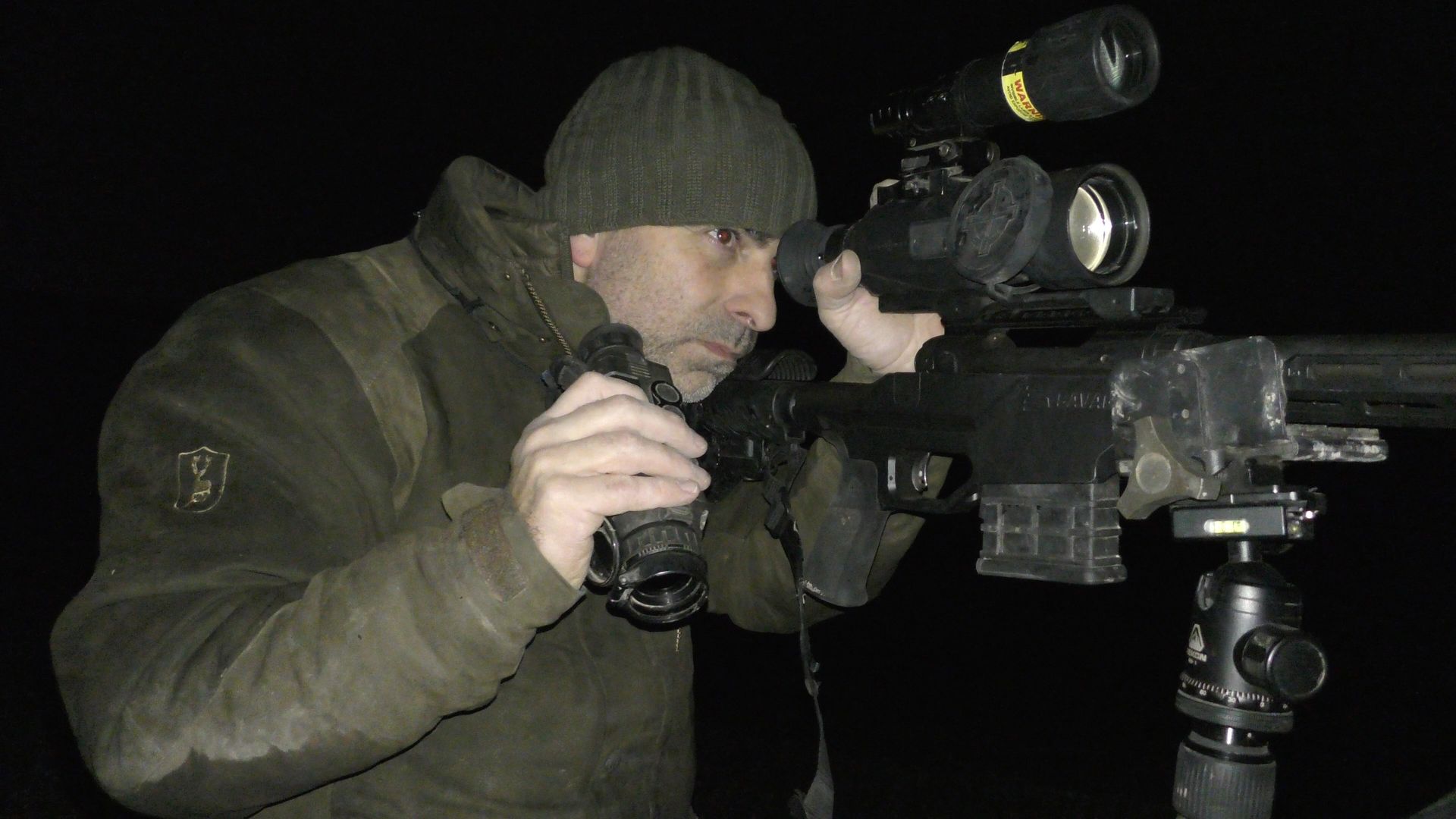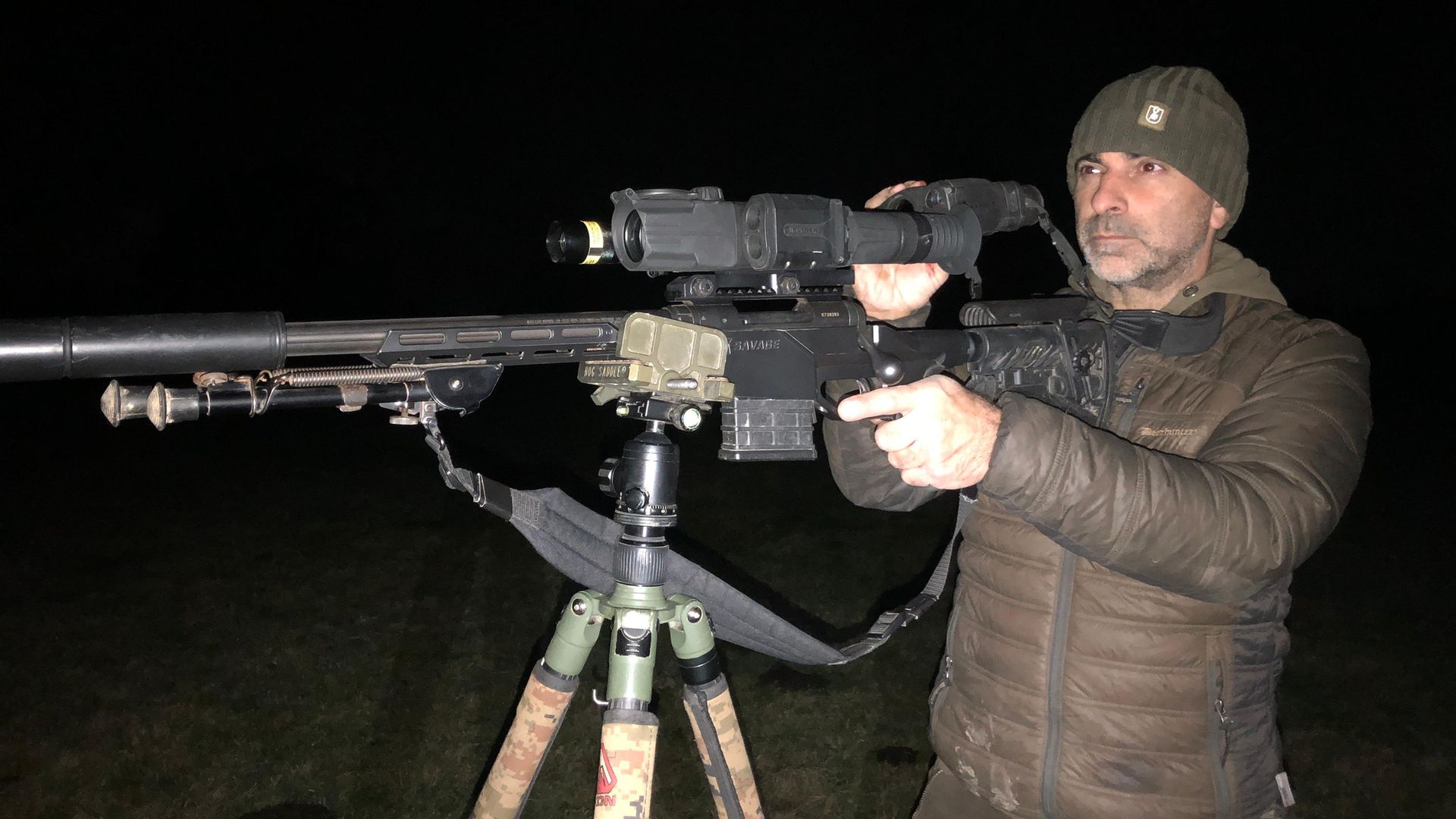Mark Ripley (260RIPS) advises you on how best to be prepared for anything on your fox control missions, so you can make the most of every opportunity presented
The saying ‘preparation is key’ is certainly relevant when it comes to foxing. Foxes are very active creatures that are rarely still for very long, unless you’re lucky enough to spot one asleep or perhaps sunning itself on the edge of cover on a summer’s morning. More often than not, the chance of a shot at a fox will be a fleeting one while out at night, and you’ve either called one in or spotted one going about its business. Either way, you will normally need to be pretty quick to get a shot while it remains in range. With this in mind, it’s important that you have a game plan or something of a routine to follow when an opportunity presents itself.
It’s easy to spot an experienced foxer by how he reacts upon initially spotting a fox. He will set up smoothly for the shot in a quick, efficient manner, making the whole process look easy. During one of my many journeys through YouTube’s related videos I recently found myself watching a guy doing some close-quarter speed shooting in America using a semi-automatic AR-15 rifle, and I quickly became fascinated by his well-practised muscle-memory actions. This guy was able to raise his rifle, disengage the safety, double-tap the target accurately, then re-apply the safety in the blink of an eye. He had clearly practised countless times just to shave a fraction of a second off everything he did, including his magazine changes and transitional drills from rifle to pistol, all of which were carried out with faultless precision, making his shooting style a joy to watch. It’s this kind of dedication to what you do, and instilling that muscle memory, that can sometimes make all the difference when every second counts.
Many of these actions will have been learned the hard way through failure. I know that over the years I must have made every mistake under the sun and lost many a fox because of it. The truth is, a mistake isn’t a mistake if you learn from it – it’s a lesson. And lessons learned equate to experience. To put this into context, I’m sure most of us have been all set to go out foxing only to find that as soon as we get out on the first field, the lamp battery or thermal battery is flat because we didn’t charge it after the last outing. Or the lamp’s power lead still has a bad connection because it never got repaired for the third time.
These are pretty obvious things that boil down to poor preparation. My routine is always to put batteries on charge the moment I get in, dry the gun if need be, and be sure any repairs or gear maintenance is done the next day before it gets forgotten about.
 credit: Mark Ripley
credit: Mark Ripley
Situational awareness
As a rule I keep all my foxing kit together in one bag (including spare batteries for every item), so should I unexpectedly get a call to go out for a problem fox, I can simply grab rifle and bag and know I have everything I need with me. That’s basic preparation. The little things that can really make a difference are more related to those crucial moments when you suddenly spot a fox.
A less-experienced shooter might unshoulder his rifle and try to set up his sticks one-handed, then halfway through check again with the thermal to see if the fox is still there, and somewhere along the line allow the metal buckle of his sling to clink against the sticks, flip up his lens cap, adjust his sticks or tripod for height, power up and focus his night scope, adjust his IR… all of which takes up valuable seconds. The more you move, the more noise you make and the less chance you have of actually shooting the fox.
So here’s my routine. The moment I get out of the truck I set my gear up ready. Lens caps are up (unless it’s raining), night vision is tested and focused along with the IR at around 100yd – the average distance I’m likely to engage a fox. Once I’m happy the IR goes off, the scope is switched to standby mode so that it will come on the second I turn it on, and then I chamber a round and apply the safety.
I also set up my shooting tripod to my height on flat ground so that it will need the minimum amount of adjustment. To make life easy, I fully extend the bottom two leg sections of the tripod, with the top section around half way, which I know is the right height for me. This means that if the ground is uneven I can adjust each leg as required at the top section without moving the rifle from out of my shoulder. All buckles, zips, and so forth that rattle will be wrapped in tape to silence them as soon as I notice it.
When it comes to taking a shot on a fox I’ve just spotted, I have a very simple routine. My rifle is always on my right shoulder and my tripod in my left hand, leaving my right hand free to use the spotter hanging around my neck. As soon as I see a fox, the first thing I do is ensure I have a safe backstop and move if necessary. Then I will tuck the thermal just inside my jacket so that the light from the screen doesn’t shine up and illuminate my face from where it’s hanging round my neck.
The next thing I do is set out the tripod facing towards the fox, unshoulder the rifle, and place it quietly into the cradle of the tripod. Next, I turn the scope on and tighten the tripod’s cradle. I will then quickly check where the fox is with the thermal and adjust the rifle position to suit before turning on the IR and finding the fox in the scope, adjusting the tripod at the same time by slackening just the ball joint.
There are several knobs on the Rekon tripod, but realistically you only need to slacken the ball joint to get all the movement you need. I always have this knob and the cradle’s locking knob on the same side so that I can adjust both from a shooting position. Now I’m ready for the shot and can simply need to slip the safety catch when the time is right.
Some people may not be comfortable carrying a rifle with a round in the chamber with the safety applied, which I can completely understand. In some cases it may well be that you are able to quietly chamber a round on spotting a fox, but I find this often takes too long and makes too much noise. For this reason, like almost every foxer I know, I carry the rifle loaded but on safe as well as being muzzle aware and keeping my finger out of the trigger guard until ready to fire at all times.
Perhaps when deer stalking, where the animal will generally be stalked while it casually grazes, chambering a round quietly when in range may well be a more viable option. It’s up to you to decide which option is for you and what you feel most comfortable with. Ultimately the key to success is preparation and having a slick routine to apply to each given situation.
 credit: Mark Ripley
credit: Mark Ripley
Learn the lessons
When the inevitable happens and something doesn’t go to plan, play the scenario back in your head and decide how you could stop that happening again. Ask what you could do differently next time, or what it could have been that spooked the fox. Can you improve your technique?
Another thing that always tickles me is watching someone rummage through eight jacket pockets for a caller or a spare battery in the heat of the moment. I always carry items I might need in the same pockets every time to save all that searching, and I only carry what I really need to carry. The KISS rule – ‘Keep it simple, stupid!’ – is really sound advice, especially when wandering around fields in the dark looking for one of the wiliest animals in the country.
It does no harm to practise walking about and imagining you have spotted a fox before going through your setting-up routine. An afternoon with a steel fox target and practising on it from different angles would certainly help highlight potential flaws in your routine and help save valuable seconds when they count during setting up in a real-life scenario, where that one brief opportunity might be the only chance you get.